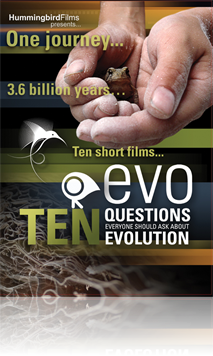All High School resources
NSTA Press Book
DVD ONLY EVO: Ten Questions Everyone Should Ask About Evolution
Draw on the wit and wisdom of brilliant scientists to inspire your students as you teach them about a challenging area of biology. This teacher’s guide, which accompanies the EVO DVD, is structured around 10 fundamental questions about biological e...
By John Feldman
NSTA Press Book
You Want Me to Teach What? Sure-Fire Methods for Teaching Physical Science and Math
Problem: You feel shaky about being assigned to teach upper-level science and math and need to get up to speed—fast. Solution: Follow this concise book’s tried-and-true methods, which you can integrate into your classroom and lesson plans startin...
By Norman LaFave
NSTA Press Book
BOOK ONLY EVO Teachers Guide: Ten Questions Everyone Should Ask About Evolution
Draw on the wit and wisdom of brilliant scientists to inspire your students as you teach them about a challenging area of biology. This teacher’s guide, which accompanies the EVO DVD, is structured around 10 fundamental questions about biological e...
By Rodger W. Bybee, John Feldman
NSTA Press Book
Connecting With Nature: A Naturalist's Perspective
One of my earliest memories is of a warm day, a field with many grasshoppers, a shallow creek with cold water, and the joy of a day in the hills with my parents. My dad had gone fishing and I was free to wander about nearby. It was summer in the Gray...
By Robert Stebbins
NSTA Press Book
Front-Page Science: Engaging Teens in Science Literacy
“The U.S. Preventative Services Task Force issued new guidelines for mammograms in 2009. What does this mean for someone with a family history of breast cancer? Congress periodically votes on a piece of legislation called the Farm Bill. What does i...
By Angela Kohnen, Alan Newman, Laura Pearce, Wendy Saul
NSTA Press Book
Humans perceive the world by constructing mental models—telling a story, interpreting a map, reading a book. Every way we interact with the world involves mental models, whether creating new ones or building on existing models with the introduction...
By Steven W. Gilbert
NSTA Press Book
Project Earth Science: Physical Oceanography, Revised 2nd Edition
How well can your students— • Explain why ice floats? • Model ocean currents? • Predict tides? • Describe the proper clean-up of an oil spill? ...
By Alfredo L. Aretxabaleta, Gregg R. Brooks, Nancy W. West
NSTA Press Book
STEM Student Research Handbook
This comprehensive resource for STEM teachers and students, outlines the various stages of large-scale research projects, enabling teachers to coach their students through the research process. This handbook provides enough detail to embolden all tea...
By Darci J. Harland



